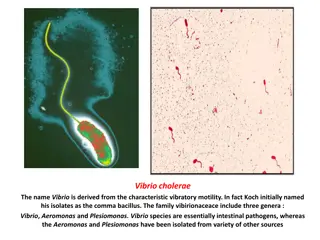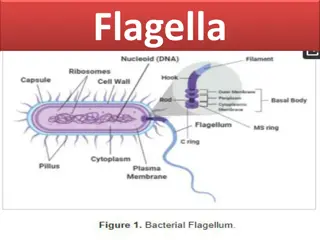Overview of Vibrio cholerae: Characteristics and Identification
Vibrio cholerae is a gram-negative, curved rod bacterium known for causing cholera. Its distinctive features include polar flagellum motility, oxidase-positive nature, and resistance to inhibitory substances. Various culture media are used for its isolation and growth, such as transport, routine, an
0 views • 8 slides
Understanding Chytridiomycota: The Flagellated Fungi
Chytridiomycota is a phylum of fungi distinguished by having motile spores with a single posterior flagellum. They are primarily aquatic, parasitic on algae and animals, and play a role in plant diseases. Their unique characteristics include alternation of generation and somatic phase with rhizoids.
8 views • 11 slides
Understanding Bacterial Flagella: Structure and Function
Bacterial flagella, known as flagellum, are hairlike appendages responsible for swimming motility. They are composed of three parts - the filament, basal body, and hook. The filament is a hollow cylinder made of flagellin protein subunits. The synthesis of flagella involves multiple genes. This arti
0 views • 6 slides


